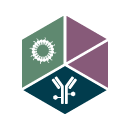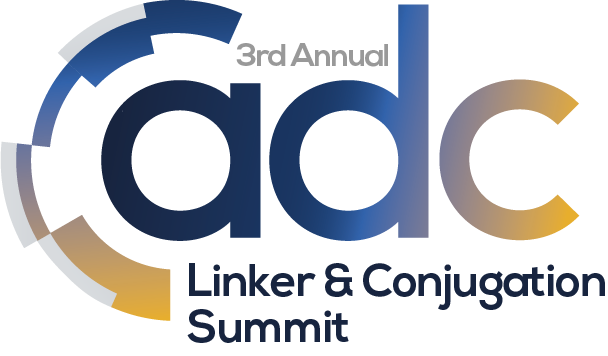The 3rd Annual ADC Linker & Conjugation Summit
Bioconjugation Insights 2025; 1(3), 73–75
DOI: 10.18609/bci.2025.015
As part of our ongoing coverage of key gatherings in the bioconjugation space, Bioconjugation Insights presents an event preview of the 3rd Annual ADC Linker & Conjugation Summit. Taking place August 19–21, 2025, in Boston, Massachusetts, US, the summit will showcase the latest advances, technologies, and collaborative opportunities in innovative linker design, optimized conjugation strategies, and breakthroughs that are driving safer, more effective next-generation ADCs. This preview offers readers a glimpse into the sessions, speakers, and themes that will shape the discussions of the 3rd Annual ADC Linker & Conjugation Summit.
Linker design strategies
The summit showcases groundbreaking approaches to linker design aimed at improving stability, controlled payload release, and accommodating new formats and highly hydrophobic payloads. Arnaud Tiberghien, Bicycle Therapeutics, will present the architectures of Bicycle® constructs, highlighting differences from traditional antibody‑based systems and how these bicyclic peptide linkers enhance therapeutic properties. Tatiana Novobrantseva, NextPoint Therapeutics, shares the development of the proprietary NPX125 linker for B7‑H7 targeting ADCs, specifically designed to address a broad patient population while ensuring linker compatibility with complex tumor biology. Marc Robillard, Tagworks, introduces click‑cleavable linkers, which promise to expand payload release mechanisms, improve targeting scope, and offer enhanced safety profiles by reducing premature cleavage. The summit also includes a roundtable on balancing stable versus unstable linkers to optimize efficacy and toxicity outcomes.
Next-generation conjugation chemistry
Day two focuses on cutting‑edge conjugation technologies beyond traditional maleimide chemistry, which often limits stability. Manel Merabet, Skymab Therapeutics, reveals preclinical insights into a next‑generation site‑specific conjugation platform that overcomes maleimide limitations, while Marcello Marelli, AstraZeneca, outlines how stable chemistries and optimized sites can significantly improve therapeutic indices. Martijn Verdoes, Leiden University Medical Center, introduces Ubi‑tagging, a ubiquitin‑based modular platform enabling precise, iterative conjugation steps and potent immune activation. Mark Distefano, University of Minnesota, explores prenyltransferases as tools for installing biorthogonal functionalities, broadening applications from targeted cell killing to diagnostic imaging. Wei Lu, OnCusp Therapeutics, highlights the T1000‑exatecan platform, demonstrating stable, target‑specific antitumor activity with a clean safety profile, while Philipp Ochtrop, Tubulis GmbH, discusses the Alco5 strategy for delivering hydroxyl‑linked payloads with high DAR and excellent PK profiles.
Optimizing conjugation site selection
The pre‑conference workshops provide a deep technical dive into selecting optimal conjugation sites, a crucial step for maximizing ADC stability and payload release. Ganapathy Sarma, Exelixis, Tero Satomaa, Glykos, and Lea Rochet, ADC Therapeutics, lead sessions on how the chemical environment influences site choice and how structural modeling and analytical tools, such as hydrophobic interaction chromatography, guide site accessibility decisions. Andrea North, CSIRO, contributes expertise on balancing linker exposure to prevent premature cleavage while ensuring efficient payload delivery. A complementary focus is optimizing the drug‑to‑antibody ratio (DAR), a critical balance for efficacy and safety. Strategies include integrating hydrophilic moieties like PEGs, phosphate prodrugs, and charged amino acids to offset hydrophobic payload limitations and achieve higher DAR without compromising solubility or stability. Participants will explore solvent selection and payload design in tandem with conjugation chemistry, gaining practical insights into tuning DAR and site selection to extend ADC half‑life, reduce aggregation, and improve clinical outcomes.
Dual payload ADCs
A major highlight is the exploration of new linker and conjugation technology for unlocking success in dual payload ADCs. Marco Lobba, Catena Biosciences, will discuss site‑selective conjugation technologies such as the CysTyr platform, enabling the efficient manufacturing of multi‑payload ADCs with improved potency and stability.Romain Bertrand, , Araris Bio, presents an innovative approach utilizing bacterial transglutaminase combined with Diels‑Alder cycloaddition to attach two payloads via diene‑containing linkers, demonstrating robust in vitro and in vivo performance. Juhani Saarinen, Glykos, delves into the chemical engineering of branched linkers designed to provide tumor‑specific cleavage mechanisms, maintaining payload stability while ensuring effective release. The session also covers hydrophilic linker designs that facilitate dual payload incorporation without increasing hydrophobicity or aggregation.
Whether you are advancing early research, refining conjugation platforms, or exploring novel ADC formats, the 3rd ADC Linker & Conjugation Summit 2025 is your gateway to novel linker designs, optimized conjugation chemistry, dual‑payload innovations, and next‑generation ADC strategies.
As a reader of Bioconjugation Insights, you’re entitled to a 10% discount on delegate tickets—just use the discount code BCI10! You can find out more about the event here.
Additionally, to find out what other bioconjugate events are upcoming, you can find our online Events Calendar here.

